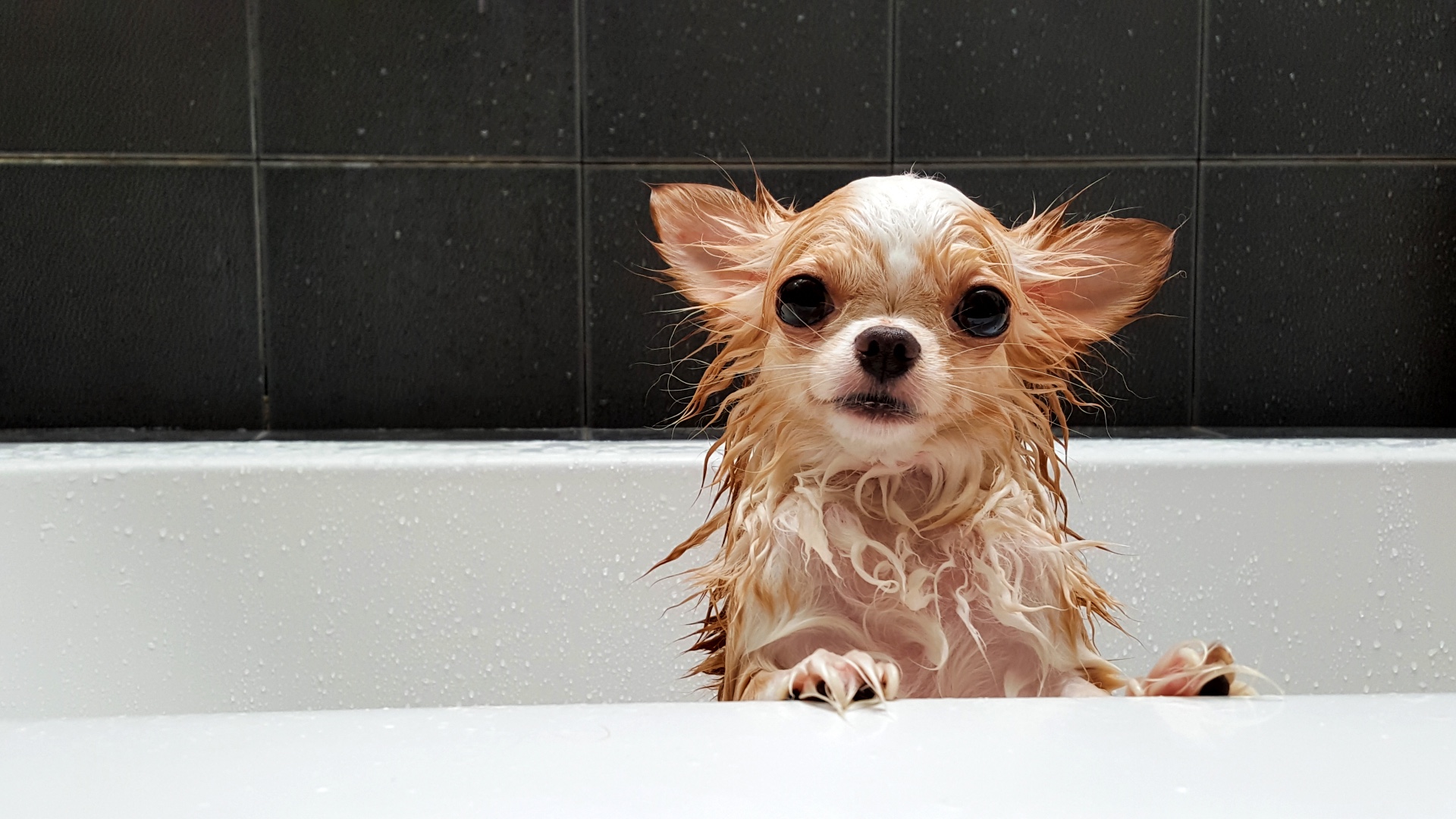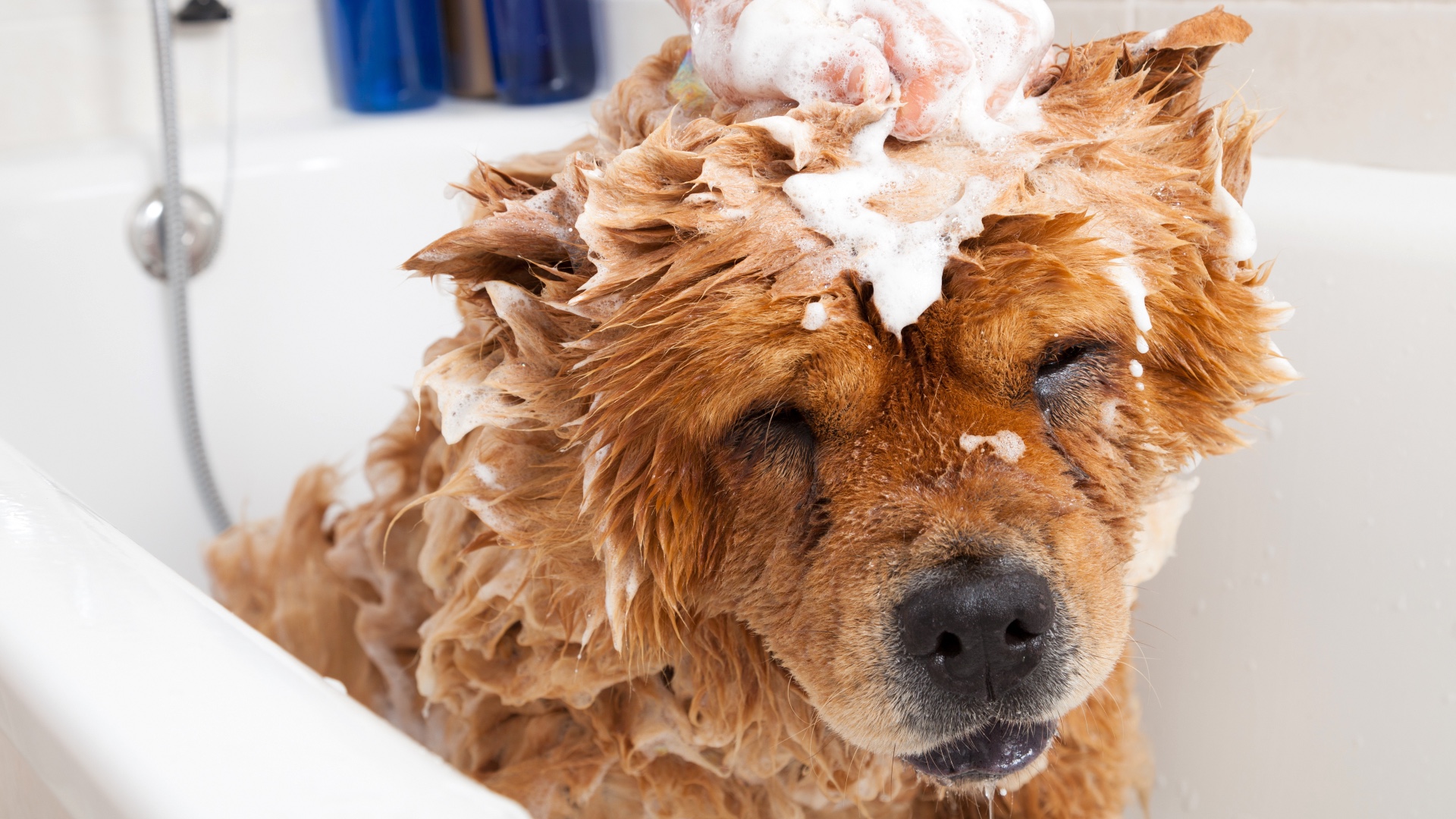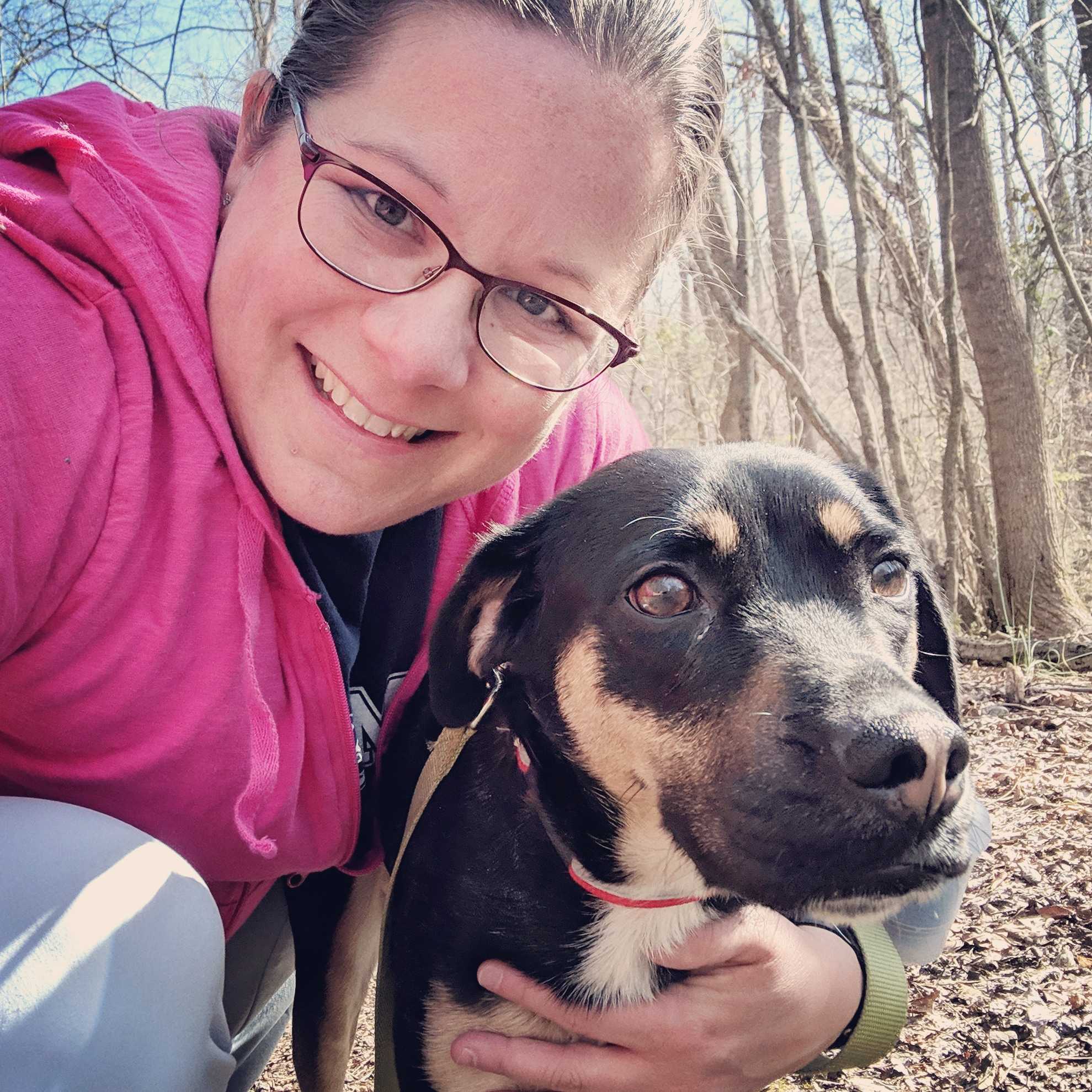How to give a dog a flea bath
When you’re battling fleas, it’s important to know how to give a dog a flea bath safely and to know your alternatives

It's only natural to wonder how to give a dog a flea bath, especially if you notice fleas scurrying around while you’re petting your dog. Before you rush out to the pet supply store and buy flea shampoo, however, step back and think for a minute. Pesticide-containing flea baths can offer benefits to some dogs with a heavy flea infestation, but they also come with risks. Do your research to determine whether your pooch will benefit from a flea bath, or whether an alternative flea treatment for dogs may be a better option.
- How often should I bathe my dog? 5 tips for keeping your pooch feeling fresh
- The best flea medication for dogs: Pills to keep your canine free of critters
- Six ways to prevent fleas
Do dogs need a bath for fleas?
Bathing your dog can be an effective way to remove large numbers of adult fleas. While some shampoos contain pesticides that are specifically designed to kill fleas and other insects, almost any dog shampoo will reduce the number of fleas on your pup, if used correctly. Sudsing your dog up and allowing the lather to remain on your dog’s coat for ten minutes will suffocate fleas, killing many fleas in a manner similar to a flea bath.
While a bath can kill adult fleas, it doesn't do anything to address flea eggs and flea larvae in your environment. Did you know that a single female adult flea can lay up to 40-50 eggs per day? If your dog has enough fleas that you are noticing them on your dog’s skin, countless eggs have probably already been shed in your environment. Even if you remove all of the adult fleas on your dog with a bath, your dog is bound to become reinfested as soon as they return to your home or yard. In order to treat fleas effectively, you need a longer-acting solution that will not only kill the adult fleas but also prevent reinfestation.
Alternative flea treatments
Effective flea control requires the use of a long-acting flea preventative. This way, when your dog once again encounters fleas in the environment, those fleas do not have the opportunity to set up an infestation.
The most effective flea preventatives are those that are prescribed by veterinarians. These products typically contain newer drugs, meaning that fleas have not yet had an opportunity to develop resistance to these products. Additionally, prescription flea preventatives are often more targeted than the broad-spectrum pesticides included in over-the-counter products, which minimizes the risk of side effects. Prescription flea preventatives are available in both topical and oral formulations, depending on your pet’s needs, your preferences, and your veterinarian’s recommendations. Talk to your veterinarian to determine which prescription flea preventative is best for your dog.
Over-the-counter flea preventatives are also available. These products may work better than a flea bath, but they are often less effective than prescription flea preventatives. Some of the best flea collars for dogs are available in pet supply stores; the most effective of these collars is the Seresto collar, which kills fleas and ticks for up to eight months.
Topical flea preventatives found in pet supply stores often have variable efficacy because fleas may be resistant to some products, but Frontline Plus can be effective for some dogs. If you purchase over-the-counter flea prevention, be sure to read product labels carefully. Many over-the-counter canine flea preventatives are toxic to cats; these products can cause significant harm if your cat snuggles with your dog after the application of a topical flea prevention. There may also be other safety warnings, depending on the particular product that you are using, so it’s important to thoroughly read product inserts and instructions.
Get the best advice, tips and top tech for your beloved Pets
How to give a dog a flea bath

Follow these steps on how to give a dog a bath if you're looking to use a flea bath as a sole treatment or in addition to administering a long-acting flea preventative:
1. Select your shampoo carefully. Many flea shampoos contain chemicals called pyrethrins, which may be unsafe for young puppies and are toxic to cats. Remember that any dog shampoo will kill adult fleas if you allow the suds to remain on your dog for long enough, so you don’t necessarily need a flea shampoo to kill live fleas.
2. Bathe your dog in a well-ventilated area. This step is especially important if you’re using a shampoo that contains pyrethrins or other insecticides because prolonged breathing of these chemicals can irritate the eyes, nose, and throat of both dogs and humans.
3. Avoid getting shampoo and water in your dog’s eyes and ears. Moisture in the ears can predispose your dog to an ear infection, while shampoo can cause significant damage to the eyes.
4. Rinse your dog thoroughly after bathing. Shampoo residue that is left on the skin can cause skin irritation, even if you are using a gentle shampoo.
If you opt to apply a topical flea preventative after giving a bath, talk to your veterinarian or read the label instructions for guidance on when to do so. Some flea products can be applied as soon as your dog’s coat is dry, while other products should be applied several days after bathing (to allow the skin time to replenish its natural oils).
When to see a vet
Fleas are typically accompanied by a small degree of itching. If your dog is experiencing severe itching, however, you should seek the help of a veterinarian. Many dogs have a condition known as Flea Allergy Dermatitis (FAD), which is an allergy to proteins that are found within flea saliva. In these dogs, even a small number of flea bites can trigger a serious allergic reaction. Signs of FAD typically include redness of the skin and hair loss, especially over the base of the tail. If your dog has FAD, your veterinarian can prescribe medications to decrease the allergic reactions that are occurring in your dog’s skin. Flea prevention will also be an essential component of treatment, but prescription medications can help give your dog rapid relief.
In other cases, dogs may develop a bacterial infection as a result of the itching and inflammation caused by fleas. There are always bacteria on the surface of your dog’s skin, but vigorous itching can allow these bacteria to enter the skin and cause an infection. If your dog is showing signs of infection, such as scabs, bumps, pustules on the skin, or hot spots, contact your veterinarian to schedule an appointment for an evaluation. Medicated shampoos or oral antibiotics are typically required in dogs with a skin infection.
Conclusion: Know your options
While it is important to know how to give a dog a flea bath safely, it’s equally important to be knowledgeable about other flea control options. Using long-acting flea prevention all year round can help you stop flea problems before they have a chance to get started. If your dog does develop a flea infestation, combine a bath with other treatments to achieve maximal benefits.
Want more content like this? Check out our feature on how often you should bathe a puppy. Here are the safest flea treatments for dogs.
Dr. Barnette is a graduate of the University of Florida, where she received both her B.S. in Zoology and her Doctor of Veterinary Medicine (DVM). She has 15 years of clinical experience as a small animal veterinarian, treating dogs, cats, and occasional exotic patients. She now works as a freelance veterinary writer, creating educational content for veterinarians, veterinary team members, and dedicated pet owners. Dr. Barnette lives in southwest Florida with her husband and daughter (plus two cats, a dog, and a rescued dove!) and enjoys kayaking, biking, and hiking. Learn more about Dr. Barnette at www.linkedin.com/in/catherinebarnette.

